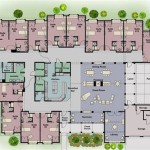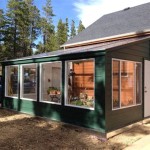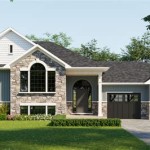Easy House Plans To Build: A Comprehensive Guide
Embarking on the journey of building a house can seem daunting, particularly for those unfamiliar with construction or architectural design. However, with careful planning and the selection of appropriate, easy-to-build house plans, the process can become significantly more manageable and rewarding. This article provides a comprehensive overview of factors to consider when choosing easy house plans, key design elements that contribute to ease of construction, and strategies for successful execution.
Defining "Easy" in House Plans
The concept of "easy" house plans is subjective and depends largely on the builder's skill level and available resources. Generally, easy-to-build house plans share several key characteristics. They tend to be smaller in square footage, featuring simple, rectangular or square footprints. Complex architectural details, such as intricate rooflines, curved walls, or elaborate ornamentation, are typically absent. The plans are often designed with readily available and affordable materials in mind and prioritize straightforward construction techniques.
Furthermore, easy house plans are usually well-documented and provide clear, concise instructions. Detailed blueprints with accurate measurements, material lists, and step-by-step guidance are crucial for a successful build. The availability of support resources, such as online forums, instructional videos, or direct communication with the plan designer, can also greatly facilitate the construction process.
It's important to distinguish between "easy" and "cheap." While easy house plans often result in cost savings due to reduced labor and material requirements, compromising on quality or code compliance to minimize expenses can lead to significant problems down the line. An easy-to-build plan should still adhere to all local building codes and prioritize structural integrity and safety.
Key Considerations When Choosing a Plan
Selecting the right easy house plan involves a careful assessment of individual needs, budget constraints, and site conditions. Several factors should be taken into consideration before committing to a particular design.
Needs Assessment: Begin by thoroughly evaluating the intended use of the house and the specific requirements of the occupants. Consider the number of bedrooms and bathrooms needed, desired living space, kitchen requirements, and any special needs, such as accessibility features. A clear understanding of these needs will help narrow down the options and ensure that the chosen plan is suitable for the intended purpose.
Budget: Establishing a realistic budget is crucial for any construction project. Determine the maximum amount you are willing to spend on materials, labor, and permits. Factor in unexpected expenses, which are common in construction projects. Easy house plans can often be built for less than more complex designs, but it’s still important to have a realistic budget to avoid financial difficulties.
Site Conditions: The characteristics of the building site can significantly impact the choice of house plan. Consider the topography, soil type, drainage, and local climate. A sloping site, for example, may require a different foundation type or necessitate modifications to the plan. Likewise, areas prone to extreme weather conditions may require specific design considerations to ensure structural safety and energy efficiency. Consult with a local engineer or builder to assess the site conditions and determine any necessary adaptations to the chosen plan.
Local Building Codes and Regulations: All construction projects must comply with local building codes and regulations. These codes address various aspects of construction, including structural integrity, fire safety, energy efficiency, and accessibility. Before commencing construction, obtain the necessary permits and ensure that the chosen house plan meets all applicable codes. Failure to comply with these regulations can result in costly delays and penalties.
Future Expansion: Consider the possibility of future expansion when selecting a house plan. Choosing a design that can be easily expanded upon, such as by adding an extra room or floor, can provide flexibility and accommodate changing needs over time. If future expansion is a possibility, ensure that the foundation and structural elements are designed to support the additional load.
Design Elements That Simplify Construction
Certain design elements contribute significantly to the ease of construction. Incorporating these elements into the house plan can streamline the building process and reduce the likelihood of complications.
Simple Footprint: As previously mentioned, a simple, rectangular or square footprint is generally easier to build than a complex, multi-angled design. A rectangular footprint minimizes the number of corners and reduces the complexity of the foundation and framing. This translates to faster construction times and reduced material waste.
Simple Roofline: Complex rooflines, with multiple gables, dormers, and hips, can be challenging to construct, particularly for inexperienced builders. A simple gable or hip roof is easier to frame and less prone to leaks. Consider a roof with a moderate pitch to balance aesthetics with ease of construction.
Efficient Layout: An efficient layout minimizes the amount of interior wall framing and maximizes usable space. Open floor plans, for example, require fewer interior walls and can create a sense of spaciousness. Grouping plumbing fixtures together, such as bathrooms and kitchens, can also simplify the plumbing installation and reduce material costs.
Standardized Materials: Utilizing standardized materials, such as readily available lumber sizes and pre-manufactured components, can simplify the construction process. Standardized materials are typically easier to source and less expensive than custom-made components. They also reduce the amount of cutting and fitting required on site, saving time and labor.
Simplified Foundation: The foundation is the foundation base of the house, and its construction can be challenging. A simple slab-on-grade foundation is often the easiest and least expensive option, provided the site conditions are suitable. Other foundation types, such as crawl spaces or basements, can add complexity to the construction process.
Detailed and Clear Blueprints: The importance of detailed and clear blueprints cannot be overstated. The blueprints should provide accurate measurements, material lists, and detailed instructions for each stage of construction. They should also include diagrams and illustrations to clarify complex details. Consult with a qualified architect or engineer to ensure that the blueprints are accurate and complete.
Strategies for Successful Execution
Even with an easy-to-build house plan, successful execution requires careful planning, diligent execution, and a proactive approach to problem-solving. Consider the following strategies to increase the likelihood of a successful build.
Thorough Planning: Planning is paramount. Develop a detailed construction schedule, outlining the tasks involved and the estimated timeline for each task. Identify potential challenges and develop contingency plans to address them. Obtain all necessary permits and approvals before commencing construction. A well-defined plan will help keep the project on track and minimize delays.
Accurate Cost Estimation: Develop a detailed cost estimate, accounting for all materials, labor, permits, and other expenses. Obtain multiple quotes from suppliers and contractors to ensure that you are getting the best possible prices. Track expenses closely and make adjustments to the budget as needed. Accurate cost estimation is essential for staying within budget and avoiding financial difficulties.
Qualified Contractors: If you are not experienced in construction, consider hiring qualified contractors to perform certain tasks, such as foundation work, framing, plumbing, and electrical. Choose contractors with a proven track record of quality workmanship and adherence to building codes. Obtain multiple bids and check references before hiring a contractor. While it may be tempting to save money by performing all the work yourself, hiring qualified contractors can ensure that the job is done correctly and safely.
Effective Communication: Maintain open and effective communication with all stakeholders, including contractors, suppliers, and building inspectors. Clearly communicate your expectations and address any concerns promptly. Regular communication can help prevent misunderstandings and ensure that the project progresses smoothly.
Regular Inspections: Schedule regular inspections throughout the construction process to ensure that the work is being performed according to the blueprints and building codes. Building inspectors can identify potential problems early on and prevent costly rework. Address any deficiencies promptly and obtain written confirmation that they have been corrected.
Quality Control: Implement a robust quality control program to ensure that the materials and workmanship meet the required standards. Inspect materials upon delivery to ensure that they are free from defects. Supervise the work closely and ensure that contractors are following the blueprints and building codes. Addressing quality issues early on can prevent long-term problems and ensure the longevity of the house.
Conclusion
Choosing and building an easy house plan requires careful consideration of various factors, from defining individual needs and budget to selecting appropriate design elements and implementing effective execution strategies. By prioritizing simplicity, efficiency, and adherence to building codes, prospective homeowners can navigate the construction process with greater confidence and achieve their dream of building a comfortable and affordable home. When executed well, a simple house plan can be more affordable and provide a pleasant living experience.

Easy To Build Houses And Floor Plans Houseplans Blog Com

Est House Plans To Build Simple With Style Blog Eplans Com
Est House Plans To Build Simple With Style Blog Eplans Com

Est House Plans To Build Simple With Style Blog Eplans Com

Easy To Build Houses And Floor Plans Houseplans Blog Com

Est House Plans To Build Simple With Style Blog Eplans Com

Low Budget Simple House Design Plans For Builders Blog Builderhouseplans Com

Stylish And Simple Inexpensive House Plans To Build Houseplans Blog Com

Affordable House Plans Our Est To Build Blog Homeplans Com

Low Budget Simple House Design Plans For Builders Blog Builderhouseplans Com








